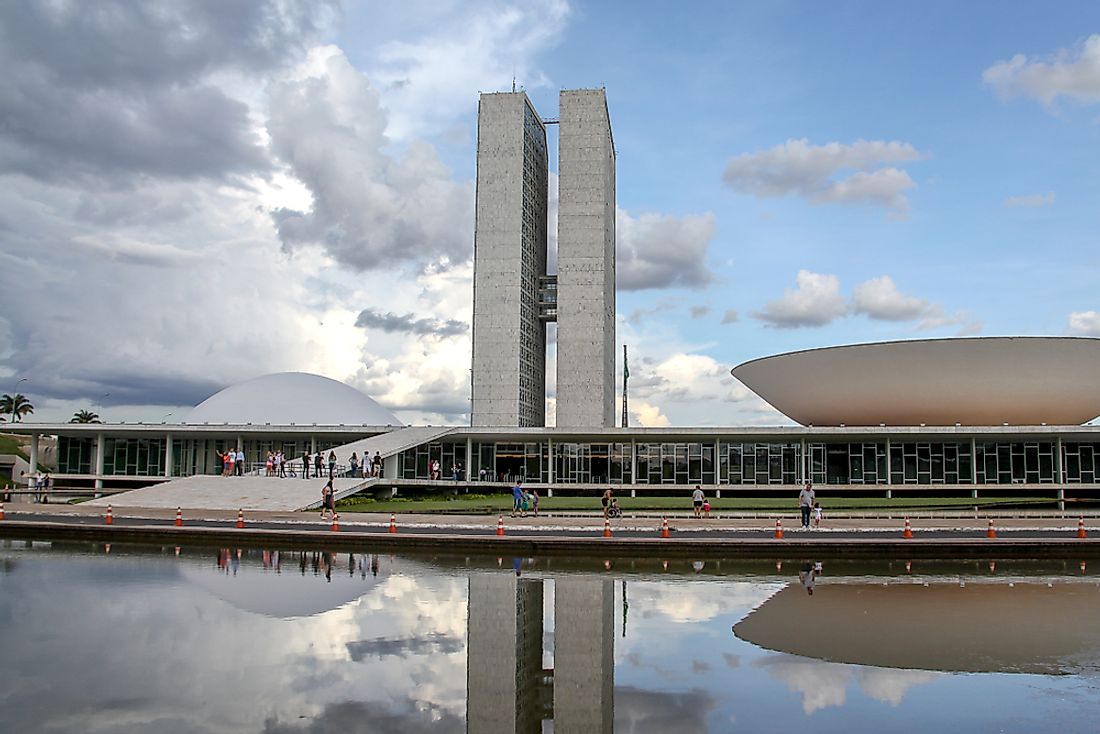What Type of Government Does Brazil Have?

Government of Brazil
The government of Brazil is considered a federal representative democratic republic, under a presidential system. Under this system, the President is both the Head of State and the Head of Government. Multiple political parties are represented throughout the government and its administration. The administrative organization of Brazil includes the federal government, states, federal districts, and municipalities. This article focuses on the federal government, also known as União, which is divided into 3 branches: the executive, the legislative, and the judicial.
Role of the President
The President of Brazil is elected by the general population to serve a 4-year term, limited to 2 consecutive terms. However, a President who has served two consecutive terms may run for office in the future with a lapse of 4 years. The person in this office is in charge of the executive branch of government and is the Commander-in-Chief of the military forces. The President appoints members to the Cabinet and judges to the Supreme Court. The judge appointments must be approved by the Senate. The President is also able to propose new laws to the National Congress or enact provisional laws in cases of emergency. These provisional laws are effective for between 60 and 120 days and Congress can vote to make them permanent laws. In addition to the domestic duties of the office, the President also represents Brazil in international affairs.
Executive Branch Of The Government of Brazil
The executive branch of government is headed by the President and administered by the Cabinet of Ministers. These members are appointed by and can be dismissed by the President. The Cabinet consists of the Chief of Staff, Secretary of Government, Institutional Security Cabinet, Central Bank, and 21 Ministries. Cabinet Ministers are responsible for managing specific ministries. They do this by evaluating ministry programs, creating policies, and properly allocating public resources.
Legislative Branch Of The Government of Brazil
The legislative branch of government is administered by the National Congress and is responsible for writing and approving new laws. The Federal Senate and the Chamber of Deputies make up the National Congress. The Federal Senate is made up of 81 members, 3 representatives from each of the states and federal districts. Elections are alternated so one-third of the members are elected after a 4 year period and the other two-thirds are elected after the next 4 years. Each senator serves an 8-year elected term. The Chamber of Deputies consists of 513 members, who are elected based on proportional representation (the population size of their specific state or federal district). These individuals serve 4-year elected terms.
Judicial Branch Of The Government of Brazil
The judicial branch of government is designed based on a civil law adversarial system, which means that cases are tried before an unbiased group of people (like a jury). The courts are divided into different jurisdictions throughout state and federal governments with some specially designated courts, including: Labor Justice, Electoral Justice, and Military Justice. For civil and criminal cases, federal courts are available at the Judiciary subsection level and are the first courts to hear a case. Should the case be appealed, it goes on to the Federal Regional Tribunal. The two highest level courts are: the Superior Justice Tribunal and the Supreme Federal Court. The Superior Justice Tribunal hears cases when two or more Federal Regional Tribunals have ruled differently on the same federal laws or when a Federal Regional Tribunal rules in violation of a federal law. The Supreme Federal Court hears cases when a Federal Regional Tribunal rules in violation of the Constitution.







